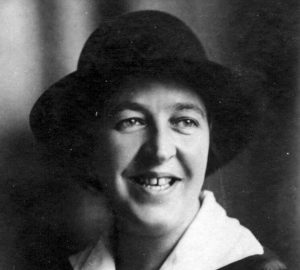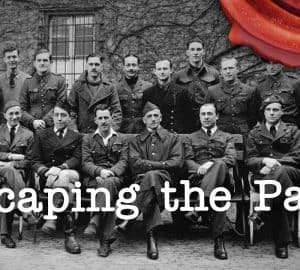
Editor’s Note: We welcome Taman Turbinton on the 74th Anniversary of Pearl Harbor to present his theory on Russian involvement in tragedy
Still after 74 years, the date of December 7 brings back remembrance of shock and devastation. The surprise bombing by the Japanese Navy against the United States Naval base at Pearl Harbor, Hawaii, cost the lives of more than 2,400 Americans. Various treatments on the tragic event have tried to reveal the United States government’s foreknowledge of the attack. Robert Stinnett’s full length treatment on President Franklin Roosevelt’s knowledge of an imminent attack on Pearl Harbor is one of the most detailed.1 Although that issue is important in and of itself, there is another side of the story that needs to be more widely acknowledged. The task at hand is to briefly examine the very often neglected information by our “standard” historians, about Soviet Agents placed in high positions in the United States government and other places around the world, and their involvement in deliberate enticement of Japanese aggression which lead to the attack.
Before the attack there were multiple factors which led to further hostility between the U. S. and Japan. While the United States was in relatively good terms with China, in 1931, Japan annexed the northeastern province of Manchuria, and in 1937 began to further expansion in China against the Nationalist government of Chiang Kai-shek. During this time the U.S. was a significant financial power. America was the leading country in producing petroleum, and a banking center for nations around the world, including Japan. Japan was an island poor in resources and had to import oil for its economy and military. The transgressions of Japan against China led U.S. officials to impose sanctions against Japan. In the summer of 1941, the United States shut off oil exports to Japan and froze its financial holdings in U.S. banking channels.2
The history between Japan and the Soviet Union also played a significant factor. Both countries were enemies, hostile in nature toward each other due to previous wars. In June of 1941, Adolf Hitler broke the Hitler-Stalin Pact (also known as the Molotov—Ribbentrop pact), by his German army’s invasion of the Soviet Union. Japan at this time was allied to Germany due to the 1940 Tripartite pact. The German Army’s invasion would have inevitably led to Japan’s involvement in the war against the Soviet Union. For Joseph Stalin this meant a two front war with Germany attacking the Soviet Union from the west and Japan attacking from the East. If a two front war were to happen it would have been detrimental to the Soviet Union. This became the dominant issue for Soviet Agents across the world; thus Moscow wasted no time in planning a way out. The plans to guide Japanese aggression away from the Soviet Union were strategically planed from the Kremlin all the way to Washington D.C. Next is a brief history of what Soviet Agents in the U. S. did to entice an attack upon the U. S. instead of the Soviet Union.
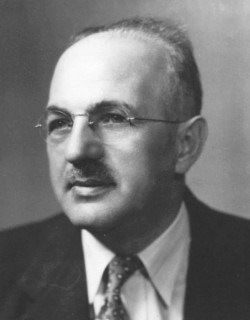
Operation Snow
Shortly before the breaking of the Hitler-Stalin Pact the most important operation which led to the attack on Pearl Harbor took place between a NKVD officer and a Treasury Department official working as a Soviet agent. The former NKVD officer, Vitaliy Pavlov, disclosed that he had traveled to Washington D. C. to brief Harry Dexter White, who was working in the U.S. Treasury Department, that there must not be a U.S.-Japanese rapprochement. It was Iskhak Akhmerov, a Soviet agent, and illegal in the U.S. who suggested that Pavlov go to White (who was noted as an agent of influence) in America to intervene in Japanese-America foreign relations. 3White first infiltrated the U.S. government when he joined the Treasury Department in 1934 as a very capable economist. The Secretary of the Treasury, Henry Morgenthau, was influenced heavily by White. In 1938, White became the director of the Division of Monetary Research, and became assistant to the Secretary of Treasury in 1941. In 1945, President Truman appointed White as the American director of the International Monetary Fund, which was one of the chief institutional pillars of the postwar international economic order.4 A brief account of what took place between White and Pavlov will provided the context to events in U.S. foreign relations with Japan and the Soviet Union shortly before and after the break of the Hitler-Stalin pact.
Vitaliy Pavlov earlier arrived in D.C. in April of 1941. In May of that year he slid into a phone booth and contacted White. Pavlov informed White that his old friend “Bill” wanted White to meet him. “Bill” was Iskhak Abdulovich Akhmerov (as mentioned above), the illegal resident, who was also a NKVD agent. Another NKVD agent, and spy recruiter, Joseph Katz had introduced Akhmerov two years earlier to White. White told Pavlov that he was busy, but Pavlov was prepared for a moment like this, as his NKVD informants expressed that White was a committed communist sympathizer and fellow traveler, but at times timid and cowardly. Pavlov convinced White to meet him, and they decided to meet at Old Ebbitt grill, as the walk was about five minutes away from White’s office. Pavlov described himself to White so that he could easily spot him. Pavlov was short and blond, a person who by his looks could pass as an American. The next day, Pavlov’s handler “Michael,” another NKVD agent briefed him on the proper things to do before he met with White.5
As White and Pavlov met at Old Ebbitt Grill, Pavlov began to brief White on how “Bill” was doing, and how he admired him. White with approval acknowledged that he had a good impression of “Bill” when he met him two years earlier. Pavlov then put on the table a folded note, White grabbed it and carefully read it. White’s eyes and facial expression expressed amazement and apprehension as he read. White had just read a detailed outline of what Pavlov’s handler “Michael” briefed him on earlier. In the note was an identified need to counteract against the fascism of Germany, and Japanese militarism. Emphasis was made about a strong expectation of an attack by Hitler, and the need for protection from Japanese aggression and attack. The counteraction was to assist in strengthening and protecting the Soviet Union, not the U.S. Anything that would also deter Japanese expansion in China, Manchuria, and Indochina was also emphasized; with a reminder to mention the Tanaka Memorial if needed. White told Pavlov that he could let “Bill” know that the ideas expressed corresponded to his own and that he already began thinking about what was possible and necessary to undertake. White asked Pavlov if he understood what he told him, Pavlov repeated the words back verbatim. Pavlov’s mission was a success as this would later lead him to be a lieutenant general of the KGB. Harry Dexter White, a highly respected and trusted assistant of President Franklin D. Roosevelt had just accepted a written NKVD order on the behalf of Josef Stalin to protect the Soviet Union from an attack on its Pacific flank, and provoke a war between the United States and Japan. White agreed to carry out what Soviet Intelligence described as “Operation Snow.”6 Shortly after the meeting Pavlov reported to Moscow that everything went as planned.7 Although Pavlov years later denied that White operated as an agent, he did acknowledge that White knew his activities would strengthen the Soviet Union.8 White more appropriately should be labeled a “non-Party Bolshevik,” as his espionage activity is widely documented, and over two dozen KGB documents reveal his espionage work.9
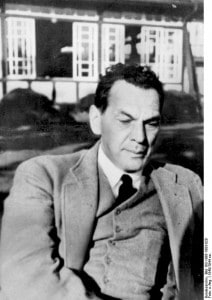
The Sorge Spy Ring
Richard Sorge was one of the most important double agents of the Soviet Union. Sorge was originally recruited into Commintern intelligence service, and was later transferred to the GRU (Soviet military intelligence). Soviet officials ordered him to join the Nazi party, and have his membership as a means of cover up for his espionage work for the Soviet Union. In 1933 he began working for a German newspaper as a correspondent in Tokyo, Japan. In Tokyo he maintained constant contact with GRU officers, Victor Zaitsev and Butkevich.10 At one of Richard Sorge’s visits from Moscow he received a direct command to assemble an espionage unit in Tokyo, due to the influence and credentials he was gaining from his work Berlin.11 Sorge, alerted Soviet officials in Moscow in early 1941, that even though Japan was planning to attack the United States after the sanctions, a Japanese-American rapprochement was possible. If the rapprochement were to take place Sorge warned that it could result in a Japanese attack on the Soviet Union.12 The Chosu clan from Honshu wanted to attack north, for they saw Russia as the natural enemy. The Satsuma clan of Kyushu wanted to attack somewhere south.13 Some of the most notable agents in Sorge’s ring were, Ozaki Hotsumi and Kinkazu Saionji, both were Japanese Communist. Also affiliated with the spy ring were Chen Han-seng—a Chinese Communist, Agnes Smedley—an American writer and Commintern agent, and the German born naturalized Briton, Guenther Stein.14 Part of Sorge’s spy ring duties was to collect secret Japanese military information, and acquire knowledge on their upcoming attacks. The most crucial task was to make sure that America was one of the options of attack instead of Russia.15 Trying to make his plan work, Sorge explained to Japanese officials:
It would be a shortsighted and mistaken view for Japan to attack Russia, since she cannot expect to gain anything in Eastern Siberia.…should Japan aspire to further expansions elsewhere than in China, the Southern area alone would be worth going into, for there Japan would find the critical resources so essential in her war-time economy, and there would confront the true enemy blocking her from her place in the sun.16
Outside of the Sorge ring, Lauchlin Currie, a Soviet agent and senior administrative assistant to President Roosevelt,17 aided in policy influence in favor hostility towards Japan. In a memo to FDR, Currie explained if the U.S. made a modus vivendi with Japan the good will built up in China would be damaged.18 Harry Dexter White, after his meeting with Pavlov made similar statements to that of Currie in trying to prevent a modus vivendi with Japan. White sent out messages through Morgenthau to Roosevelt that some governmental officials planned to portray the Chinese people. Cordell Hull, the Secretary of State, entertained a proposal of a modus vivendi from envoy Saburo Kurusu and ambassador Kichisaburo Nomura that Japan would pull out of southern Indochina for the restoration of its oil supply. On an emergency visit to the White House, Kurusu and Nomura explained to Roosevelt and Hull that the Tojo government wanted peace.19 White was deeply worried by the proposals, as “Operation Snow” was dissolving. To counter the modus vivendi, White in his memo to FDR through Morgenthau stated:
[P]ersons in our country’s government are hoping to betray the cause of the heroic Chinese people and strike a deadly blow at all your plans for a world-wide democratic victory. I was told that the Japanese Embassy staff is openly boasting of a great triumph for the “New Order.” Oil—rivers of oil—will soon be flowing to the Japanese war machines….To sell China to her enemies for the thirty blood-stained coins of gold will not only weaken our national policy in Europe as well as the Far East, but will dim the bright luster of America’s world leadership in the great democratic fight against Fascism.20
White’s plea would gain credence, as he played on religious themes in his memo, although inaccurately. Christ was betrayed for thirty pieces of silver not gold.21 In White’s May memorandum he proposed that Japan, “[w]ithdraw all support—military, political or economic—from any government in China other than that of the national government….Give up all extra-territorial rights in China….” and many other proposals that were not in Japanese interest.22 White passed on his memorandums to Cordell Hull, and he used much of White’s harsh language in his ultimatum to the Japanese in November. Hull’s memo was virtually White’s declaration of war on Japan.23 By December 1, Japanese officials would made the final orders to attack Pearl Harbor.24 Earlier, Kilsoo Haan attempted to warn the United States eight times of an eminent attack on Pearl Harbor. Haan was a Korean anti-Japanese operative in the United States with underground information on Japanese policies. Haan represented the Korean Underground in America, and sent President Roosevelt a letter on August 29, 1941, stating that Japan planned to attack Pearl Harbor.25 On September 6, 1941, Admiral Isoroku Yamamoto of the Japanese Navy was given orders in a cabinet meeting to attack Pearl Harbor unless peace terms were met with the U.S.26 After Hull’s memo reached Tokyo the Japanese were dismayed. On December 1, Emperor Hirohito met with his council and there was a unanimous decision by the cabinet for war. The cabinet agreed that the Japanese fleet would attack Pearl Harbor on December 7.27
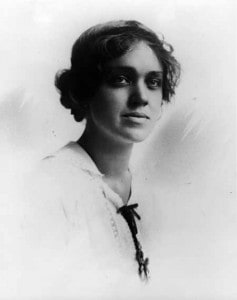
What Did Agnes Smedley Do?
Also neglected in treatments in dealing with Soviet plots for stirring tension between Japan and the U.S. is the discussion of Agnes Smedley’s role. Smedley was far from insignificant in her role as a Soviet spy. Smedley worked for the Commintern while operating in the Sorge spy ring. The Mackinnon’s in their treatment of Smedley argued that she was not a Commintern agent, or a Communist Party member.28 Ellen Chessler, a feminist biographer of Margaret Sanger, also emphasized that there were no formal ties that linked Smedley as a Soviet agent.29 Accusations of her Communist activities were commonly explained as being the result of conservative, and “McCarthyite” smears. Due to the recent availability of declassified documents, claims of Smedley’s innocence do not corroborate with the historical information. The evidence is so compelling that some liberals who loved and honored what Smedley stood for had to disappointingly acknowledge she was indeed a Commintern agent. Ruth Price, a self-proclaimed leftist, despairingly admits this fact and her words deserve to be quoted at length:
As a self-identified leftist, I, too, initially dismissed the accusations against Smedley. My Smedley was an uncompromising rebel, and I was certain that the charges against her had been triggered by people as frightened by her unbroken, independent spirit as her supposed “Communism.” I hoped in my research to exonerate Agnes once and for all of the cold war accusations against her. But there were problems. Relatively early in my inquiry, I discovered a cache of materials written by Agnes that had been preserved in Moscow, making her the only American besides John Reed with a collection of papers in a Soviet literary archive….[I]n the summer of 1988, I was invited to China to conduct my research on Smedley….several elderly Chinese and foreign expatriates who had known Smedley spoke quite openly with me about her work for the Communist International during her years in China. One woman broke down and wept retelling—for the first time, she said—her own role in the CPUSA’s destruction of Smedley’s reputation in China more than forty years before….Then halfway through my first draft, while composing the chapter that dealt with Agnes’s activities in Berlin during 1927, I made a discovery that shook my assumptions….Muenzenberg’s close friendship with a Russian Jew named Jakob Mirov-Abramov…chief assistant of Iosef Piatnitsky, head of the Otdel Mezhdunarodnoi Svyazi (Department of International Liasion), or OMS…[in] an FBI interview with a man the agency referred to as “Confidential Informant T-1,” who identified himself as secretary of the League Against Imperialism, one of the front organizations Muenzenberg ran in Berlin, and for which Agnes was accused of working…said that he had received reports from Smedley in Shanghai “by medium of Moscow” on the terroristic rule of Chiang Kai-Shek…“T-1” noted, Agnes had “a very high standing in the Secret Department of the Commintern…” My Agnes—the invincible rebel of my romantic imaginings—was gone. Against my wishes, I had succeeded in proving what her worst enemies failed to accomplish in a half a century of trying….Although the possibility of further research in China abruptly ended with the Tiananmen Massacre of June 1989, I now had several articles I was given in China the previous year translated into English. Like my interviews, they corroborated Agnes’s connection to the Commintern, and the invaluable assistance that relationship had rendered to underground Chinese Communist and other Commintern operatives during Agnes’s years in Shanghai.
…I no longer think of Smedley as the tragic victim of a McCarthyite smear. In truth, I consider her as cunning and crafty an operator as her detractors on the right ever alleged….30
Besides the findings from Price, documents from other Commintern archives provide information that Earl Browder urged the Commintern to provide funds for Agnes Smedley to establish an English language anti-imperialist newspaper in Shanghai. Browder also mentioned that the CPUSA also was willing to provide Smedley with helpers.31 Many other examples provide information as to her work as a Communist. During Smedley’s work as a Commintern agent she cleverly hid behind her activities with Margaret Sanger’s birth control movement, and used Sanger to defend and cover for her.32
In regards to Smedley relation’s with Sorge, they existed of intimate relations and espionage work. The two engaged in a lengthy affair. Smedley also willingly committed herself to Sorge’s espionage activities. Sorge initially saw women as unfit for espionage work, but Smedley was different. For Sorge, Smedley had a brilliant mind, and was like a man in espionage work. Smedley was Sorge’s chief recruiting agent, and she was able to provide Sorge with information of Sino-Japanese and Sino-American relations. Her knowledge about the Nanking government’s activities to create closer relationship with the United States and Great Britain was important because it provided Sorge with information concerning the Anglo-American bloc, and indications that Japanese relations were growing further apart. Smedley was also the person who convinced Ozaki Hotsumi to do espionage work. Once Ozaki was in she introduced him to Sorge.33 Sorge would also express that out of all the information from Japanese sources Ozaki’s was the best.34 Shortly after Pearl Harbor, Smedley showed little shock as she criticized the incompetence of U. S. officials. Years later the Army’s public information division, released a report on the Sorge spy rings activities and Sorge’s knowledge of an attack on Pearl Harbor.35 Needless to say, some of Sorge’s knowledge would have been impossible without “comrade” Smedley.
Conclusion
Although FDR had knowledge of an imminent attack upon Pearl Harbor, those largely to blame were the traitors working against the interest of the United States. The brief information presented is an attempt to show that there were Soviet agents of influence in the U. S. government, and other parts of the world to have Japan attack the U. S., or somewhere else besides Russia. This was Richard Sorge’s chief concern in Japan. His activities not only consisted of espionage, but also influencing Japanese foreign policy to attack the U.S.36 In the U.S., the betrayal is largely owed to Harry Dexter White, and Lauchlin Currie. White was the traitor with the most power and influence on foreign policy. Japan and the United States wanted peace. The activity of the Soviet agents had a tremendous effect on the turn of events. Frankly, in the words of John Koster, “Harry Dexter White gave us Pearl Harbor.”37 In agreement with Koster, it is not dubious to suppose that if it was not for the work of White and others, Pearl Harbor would have been safe, and the Soviet Union dismantled much earlier than 1991.
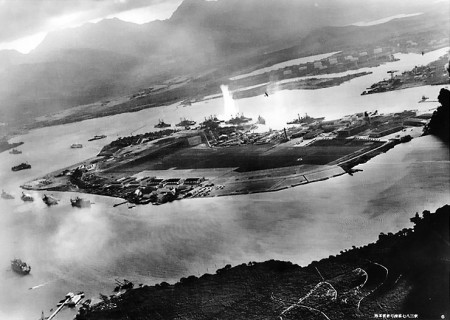
Footnotes
1. Robert B. Stinnett, Day of Deceit: The Truth about FDR and Pearl Harbor (New York: Frees Press, 2000).
2. M. Stanton Evans and Herbert Romerstein, Stalin’s Secret Agents: The Subversion of Roosevelt’s Government (New York: Threshold Editions, 2012), 90-91.
3. Herbert Romerstein and Eric Breindel, The Venona Secrets: Exposing Soviet Espionage and America’s Traitors (Washington, DC: Regnery, 2000), p. 29, 37. Akhmerov is still a controversial figure in regards to his relation with Harry Hopkins, FDR’s closet adviser. Akhmerov claimed to have interacted Hopkins as a Soviet Agent. For further information on this issue see pp. 210-219 in Romerstein and Breindel. Also see Paul Kengor, Dupes: How America’s Adversaries Have Manipulated Progressives for a Century (Wilmington, DE: ISI Books, 2010), pp. 124-26.
4. John Earl Haynes, Harvey Klehr, and Alexander Vassiliev, Spies: The Rise and Fall of the KGB in America (New Haven: Yale University Press, 2009), pp. 258-59; John Earl Haynes and Harvey Klehr, Venona: Decoding Soviet Espionage in America (New Haven, CT: Yale University Press, 1999), pp. 138-139.
5. John Koster, Operation Snow: How a Soviet Mole in FDR’s White House Triggered Pearl Harbor (Washington D.C.: Regnery History, 2012), pp. 1-3.
6. Ibid., pp. 4-8. After the fall of the Soviet Union, Vitaliy Pavlov published the events of Operation Snow in his memoirs in Russian, with the translation entitled Operation Snow: Half a Century at KGB Intelligence (Moscow: Gaia Herum, 1996). “Snow” was a play on words from White’s name.
7. Romerstein and Breindal, Venona Secrets, p. 44.
8. Evans and Romerstein, Stalin’s Secret Agents, pp. 96-97.
9. Romerstein and Breindal, Venona Secrets, pp. xv, 31; Christopher Andrew, and Vasili Mitrokhin, The Sword and the Shield: The Mitrokhin Archive and the Secret History of the KGB (New York: Basic Books, 1999), pp. 104, 106, 130, 142; Ralph de Toledano, Spies, Dupes, and Diplomats (New Rochelle, NY: Arlington House, 1967), p. 103; Haynes and Klehr, Venona, pp. 125-26; Haynes, Klehr, and Vassiliev, Spies, p. 258.
10. Romerstein and Breindal, Venona Secrets, pp. 36-37.
11. Ruth Price, The Lives of Agnes Smedley (New York: Oxford University Press, 2005), p. 237; Toledano, Spies, Dupes, and Diplomats, pp. 66-68.
12. Romerstein and Breindal, Venona Secrets, p. 36.
13. Koster, Operation Snow, p. 23.
14. Stanton Evans, Blacklisted by History: The Untold Story of Senator Joe McCarthy, and His Fight Against America’s Enemies (New York: Crown Forum, 2007), p. 68.
15. For some of the information Sorge discovered through Ozaki see, Toledano, Spies, Dupes, and Diplomats, pp. 4-5.
16. Quoted in Evans and Romerstein, Stalin’s Secret Agents, p. 93; also reported in Toledano, Spies, Dupes, and Diplomats, p. 110.
17. Haynes, Klehr, and Vassiliev, Spies, p. 262.
18. Evans and Romerstein, Stalin’s Secret Agents, p. 94.
19. Koster, Operation Snow, pp. 130-32.
20. Quoted in ibid., pp. 133-34.
21. Matthew 26:14-16. Koster rightly made this observation, see p. 134
22. Quotes from memo in Koster, Operation Snow, pp. 46-4
23. Ibid., pp. 136-37.
24. Romerstein and Breindal, Venona Secrets, p. 43.
25. Koster, Operation Snow, pp. 55, 141-42.
26. Ibid., p. 115.
27. Ibid., pp. 138-39.
28. Janice R. Mackinnon and Stephen R. MacKinnon, Agnes Smedley: The Life and Times of an American Radical (Berkeley: University of California Press, 1988), p. 142.
29. Ellen Chesler, Woman of Valor: Margaret Sanger and the Birth Control Movement in America (New York: Simon and Schuster, 1992), pp. 360-61.
30. Ruth Price, The Lives of Agnes Smedley (New York: Oxford University Press, 2005), pp. 6-8, 9.
31. Harvey Klehr, John Earl Haynes, and Fridrikh Igorevich Firsov, The Secret World of American Communism (New Haven: Yale University Press, 1995), pp. 61-63.
32. Price, Agnes Smedley, pp. 8-9; Esther Katz, Cathy Moran Hajo, and Peter C. Engelman, eds., The Selected Papers of Margaret Sanger, vol. 1, The Woman Rebel, 1900-1928 (Urbana: University of Illinois Press, 2003), pp. 350, 414; Esther Katz, Cathy Moran Hajo, and Peter C. Engelman, eds., The Selected Papers of Margaret Sanger, vol. 2, Birth Control Comes of Age, 1928-1939 (Urbana: University of Illinois Press, 2006), p. 78; Chesler, Woman of Valor, p. 360
33. Toledano, Spies, Dupes, and Diplomats, pp. 5, 34; Price, Agnes Smedley, pp. 198-200, 214-15.
34. Toledano, Spies, Dupes, and Diplomats, p. 57
35. Price, Agnes Smedley, pp. 352-53, 393-94.
36. Toledano, Spies, Dupes, and Diplomats, p. 110.
37. Koster, Operation Snow, p. 215.
Selected Bibliography
Andrew, Christopher and Vasili Mitrokhin. The Sword and the Shield: The Mitrokhin Archive and the Secret History of the KGB. New York: Basic Books, 1999.
Chesler, Ellen. Woman of Valor: Margaret Sanger and the Birth Control Movement in America. New York: Simon and Schuster, 1992.
Evans, M. Stanton. Blacklisted by History: The Untold Story of Senator Joe McCarthy and His Fight against America’s Enemies. New York: Crown Forum, 2007.
Evans, M. Stanton, and Herbert Romerstein. Stalin’s Secret Agents: The Subversion of Roosevelt’s Government. New York: Threshold Editions, 2012.
Haynes, John Earl. and Harvey Klehr. Venona: Decoding Soviet Espionage in America. New Haven, CT: Yale University Press, 1999.
Haynes, John Earl, Harvey Klehr, and Alexander Vassiliev. Spies: The Rise and Fall of the KGB in America. New Haven: Yale University Press, 2009.
Katz, Esther, Cathy Moran Hajo, and Peter C. Engelman, eds. The Selected Papers of Margaret Sanger. Vol. 1, The Woman Rebel, 1900-1928. Urbana: University of Illinois Press, 2003.
———. The Selected Papers of Margaret Sanger. Vol. 2, Birth Control Comes of Age, 1928-1939. Urbana: University of Illinois Press, 2006.
Klehr, Harvey, John Earl Haynes, and Fridrikh Igorevich Firsov. The Secret World of American Communism. New Haven: Yale University Press, 1995.
Koster, John. Operation Snow: How A Soviet Mole in FDR’s White House Triggered Pearl Harbor. Washington D.C.: Regnery History, 2012.
Mackinnon, Janice R., and Stephen R. MacKinnon. Agnes Smedley: The Life and Times of an American Radical. Berkeley: University of California Press, 1988.
Price, Ruth. The Lives of Agnes Smedley. New York: Oxford University Press, 2005.
Romerstein, Herbert, and Eric Breindel. The Venona Secrets: Exposing Soviet Espionage and America’s Traitors. Washington, D.C.: Regnery, 2000.
Toledano, Ralph de. Spies, Dupes, and Diplomats. New Rochelle, NY: Arlington House, 1967.


